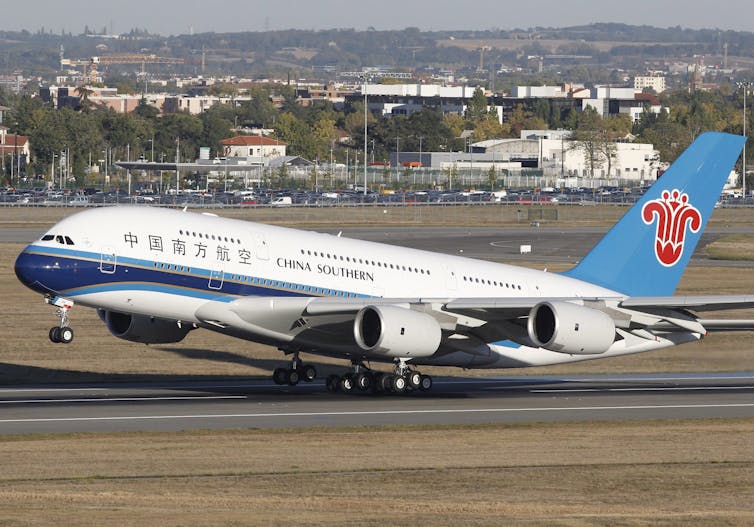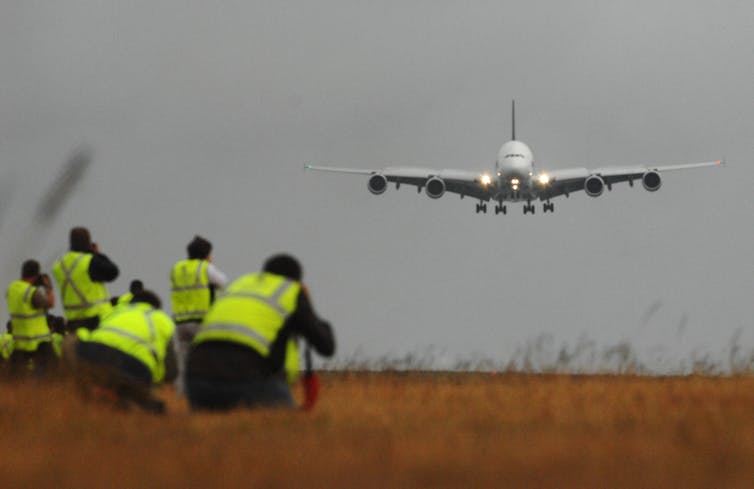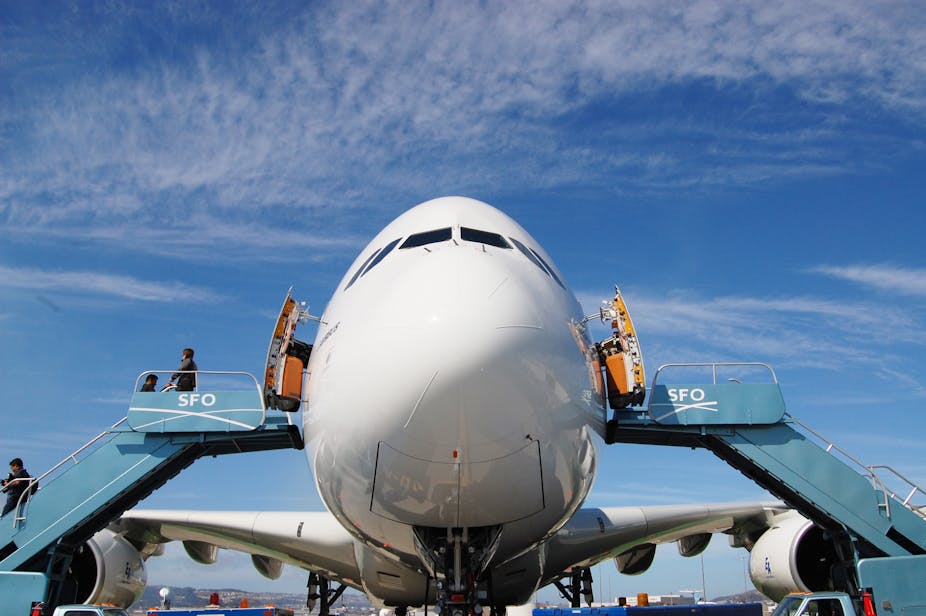The European Aviation Safety Agency (EASA) has ordered the inspection of all Airbus A380 superjumbos following the detection of cracks in the wings of several aircraft.
Cracks were first discovered in December last year, in a Qantas-owned Airbus A380 that was being repaired after an engine explosion in Singapore.
On January 20, the EASA issued an Airworthiness Directive (AD) grounding 20 A380 for visual inspections.
The 20 affected aircraft were early-delivery airframes (aircraft bodies without engines) – ten with Singapore Airlines, seven with Emirates, one with Air France and two Airbus test A380.
This initial directive allowed up to six weeks for a detailed visual inspection to be carried out on A380 that had completed between 1,300 and 1,799 flights. A380 that had completed more than 1,800 flights had to be inspected within four days.
According to EASA spokesperson Dominique Fouda, the initial round of checks “found cracks in almost all of the planes inspected”.

As a result, the EASA revised their AD, requiring the inspection of all 68 Airbus A380 in operation worldwide, and the use of high-frequency eddy current equipment for crack detection. This is a commonly-used non-destructive evaluation technique used to detect small surface cracks.
But just how much do we know about these cracks? And do the cracks have the potential to make the A380 unsafe to fly?
For a start, there are two different cracks being investigated:
- Hairline cracks around fastener holes in the internal wing structure, and
- Cracks at the edges of the vertical web of the feet.

The fastener holes are located in “rib feet” which are L-shaped brackets extending from the [wing rib](http://en.wikipedia.org/wiki/Rib_/(aircraft/) for attaching to the aircraft skin, using bolts through these holes. It is my understanding that it is the rib-feet attached to the lower skin which have this problem.
A number of wing ribs are distributed along the wing – more than 40 on each wing of the Airbus A380 – and these run from the front to the back of the wing’s internal structure.
These ribs help maintain the aerodynamic shape of the wing and transfer the aerodynamic and fuel loads to the spars – beam-like structures running along the length of the wing that are the main load-carrying structure of the wing.
The cracks found around these holes are being attributed to the manufacturing process used at Broughton, UK, where the wings are made.
This manufacturing process may be related to the combination of the use of “interference-fit” fasteners and the loads being applied when the wing skin is attached to the wing.

Interference-fit refers to the process whereby the fastener hole is made slightly smaller than the fastener diameter. When the fasteners are inserted, this has the effect of inducing stresses which offset the tensile stresses on the lower wing skin during flight, increasing fatigue life.
If the high loads being applied to the fasteners during assembly are not adequately accounted for, they will combine with the stresses arising from the interference fit, potentially leading to cracking. The particular type of aluminium alloy used will also affect this joint behaviour where a balance has to be achieved between stiffness, strength and fracture toughness.
The cracks at the edges of the vertical section of the L-shaped rib feet have been reported as more severe than those observed around the fastener holes (Type II, using Airbus terminology, as opposed to Type I for the fastener hole cracks).
These cracks are likely to be at the corners of the rib feet where stresses are higher. These are of greater concern and could be fatigue driven. The AD also states that this condition, if not detected or corrected, could potentially affect the structural integrity of the aircraft.
That said, the cracks observed so far have not been on the main load-bearing structure of the wing. It would take multiple simultaneous structural failures along a number of ribs to give rise to a structural integrity issue. It’s worth noting that there are around 4,000 rib-feet on each A380.
So what can be done about these cracks?
Well, once detected, these faults may be repaired by various means, depending on the extent of damage. For small surface cracks, metallic or carbon-fibre composite patches can be used and there is always the more-costly alternative of part replacement.

It’s worth noting that it’s not unusual for new aircraft to experience relatively minor structural (or other) problems once in service. These issues are bound to be minor, because the development of new aircraft entails a tremendous intellectual effort by thousands of engineers using advanced analytical techniques, sophisticated numerical simulation and extensive physical testing.
Airframers (such as Airbus) also work closely with national aviation certification authorities at all stages of development, to ensure the highest possible safety standards are met.
But for now, the EASA is sticking to its guns:
“This condition, if not detected and corrected, may lead to a reduction of the structural integrity of the aeroplane.”
And Airbus representatives are sticking to theirs:
“These brackets [in which the cracks have been detected] are located on wing ribs which are not a main load-bearing structure and, thus, the safe operation of the aircraft is not affected.”
It remains to be seen which analysis is closer to the truth, but it’s unlikely we’ve heard the last of the Airbus A380 saga.
Further reading:

